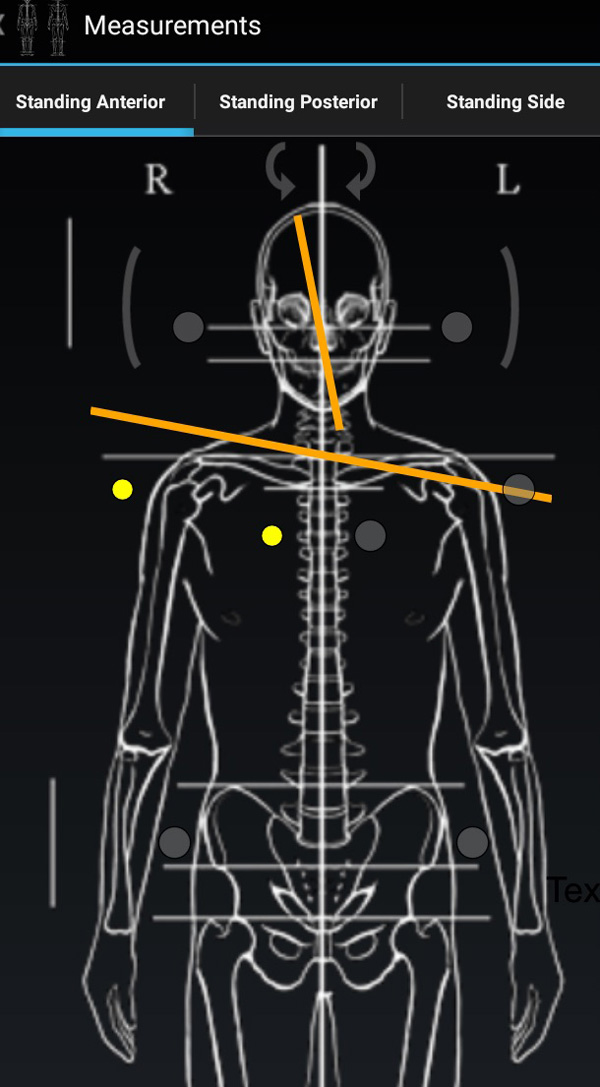Why Take Postural Measurements?
By: Alexandra Nikolov, LMT, NST
The Method for Identifying the ROOT Cause to Your Pain
Posture:
“The position of the body in space (1).”
Our posture says a lot about us. How we hold ourselves in space is determined by neurophysiological, biomechanical, and psychoemotive factors (1). It’s purpose? -To maintain the body in balance during static and dynamic movements (1).
In the practice of Neurosomatic Therapy (NST) patients often inquire, “Why do you take a postural assessment? Doesn’t it take away from my treatment time?”
Posturology:
“The discipline that deals with the scientific and clinical study of posture.(1)”
As Certified Neurosomatic Specialists (CNS) we utilize posturology to identify where the body is misaligned and ineffectively fighting the forces of gravity.
Why is this important?
Our bodies like balance and move with more ease and biomechanical efficiency when the muscles surrounding a joint are pulling around that joint in a balanced way. This prevents nerve entrapments, protects the cartilage in the joint space from wearing away and allows opposing muscles optimal contractibility when in motion.
The problem with chronic misalignments is that it prevents our bodies from functioning at its highest capacity. You see, our muscles are what pull our bones into different positions. Over-dominant and overworked muscles pull unevenly on our skeletal structure and create imbalances and postural asymmetries.
When a muscle is chronically under tension, either overly elongated or shortened, its ability to generate force is reduced and neurologically becomes hyper-stimulated. This may result in the forming of trigger points (TrP) (2). Trigger points restrict blood flow through the muscle and the structures to which they refer pain. They can be the source of pain experienced in headaches, migraines, fibromyalgia, sciatica, carpal tunnel and many other pathologies.
 For instance, the sternocleidomastoid (SCM) can form TrPs that cause headache patterns around the eye and referred pain into the ear causing tinnitus. In this image the Xs represent the origin of the trigger points in the muscle tissues. The red zones are the referred pain felt by the patient (3).
For instance, the sternocleidomastoid (SCM) can form TrPs that cause headache patterns around the eye and referred pain into the ear causing tinnitus. In this image the Xs represent the origin of the trigger points in the muscle tissues. The red zones are the referred pain felt by the patient (3).
When these issues arise the muscles, and therefore the body, perform at a deficit. Eventually this can lead to structural instability, injuries, muscle weakness, neurological issues and compromising the integrity of important connective structures like vertebral discs, ligaments and cartilage.
Let’s take a real patient example.
 One month ago I had a patient complaining of pain along the left side of her neck to the top of her shoulder. She was going to a chiropractor at the time which gave her improvement, however, it did not provide long-term pain relief. Upon examining the position of her shoulders and head I found her left shoulder was lower than her right and her head was tilted moderately to the right.
One month ago I had a patient complaining of pain along the left side of her neck to the top of her shoulder. She was going to a chiropractor at the time which gave her improvement, however, it did not provide long-term pain relief. Upon examining the position of her shoulders and head I found her left shoulder was lower than her right and her head was tilted moderately to the right.
Based on her postural chart I targeted the tissues that are responsible for elevating the right shoulder, causing a right head tilt and depressing the left shoulder (remember, our muscles are what move our bones; when a muscle contracts, it approximates its attachment points together). In this particular case, the right upper trapezius and the left latissimus dorsi were the culprits!
As I massaged her right trapezius the shoulder pain on the left began to ease. I explained the reason for this was because her right upper trapezius was so contracted it caused her head to deviate to the right which lengthens the left side of her neck to a point that is no longer tolerated by her body causing the pain on the left side.
 By releasing the right side I began to return the position of her head and shoulders to a balanced, neutral position alleviating the strain she felt on the left side.
By releasing the right side I began to return the position of her head and shoulders to a balanced, neutral position alleviating the strain she felt on the left side.
If I had applied massage directly to where the patient was feeling pain I would have only exacerbated her issue by further lengthening her left side. You can visually see this in the postural chart as the head and left shoulder move away from each other the upper trapezius would necessarily be in an over-lengthened state.
 In a nutshell, a postural assessment is what allows a CNS to identify the problematic tissues that are the root cause of a patient’s pain and dysfunction. Without this assessment your therapist would be chasing symptoms instead of targeting the specific tissues that are at the source of your issues.
In a nutshell, a postural assessment is what allows a CNS to identify the problematic tissues that are the root cause of a patient’s pain and dysfunction. Without this assessment your therapist would be chasing symptoms instead of targeting the specific tissues that are at the source of your issues.
It’s like going on a road trip with the GPS navigating your route to the end destination. Instead of Siri voicing out commands, however, the postural assessment guides us to visually pinpoint areas of the body that are the problem. Our end destination is the treatment of tissues that are responsible for creating the dysfunction thereby providing you, the patient, with long-term pain relief.
References:
- Carini F, Mazzola M, Fici C, et al. Posture and posturology, anatomical and physiological profiles: overview and current state of art. Acta Biomed. 2017;88(1):11–16. Published 2017 Apr 28. doi:10.23750/abm.v88i1.5309
- 2020. Trigger Points. [online] Available at: <https://www.physio-pedia.com/Trigger_Points#cite_note-:0-1> [Accessed 3 April 2020].
- Simons, D. G., Travell, J. G., & Simons, L. S. (1999). Travell & Simons’ myofascial pain and dysfunction: The trigger point manual(2nd ed.). Baltimore: Williams & Wilkins.
- Clark R, Jones T, Wade K. Neurosomatic Approaches to the Upper Body. Revised ed. Clearwater: Neurosomatic Educators LLC; 2017;106.
Get In Touch
(813) 820-3030
BRANDON
1112 Kyle Wood Ln,
Brandon, FL 33511
License MM34822
WESLEY CHAPEL
2253 Green Hedges Way,
Suite 102
Wesley Chapel, FL 33544
License MM43898
Hours
Monday - Saturday
9:00am - 5:00pm by Appointment
Sunday — Closed
Quick Links
MA77362 | MA89411
MM34822 | MM43898




